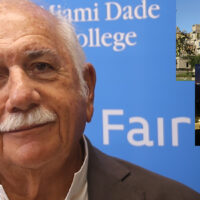Iconic Architect Moshe Safdie: From Habitat to Yad Vashem

MOSHE SAFDIE is an architect, urban planner, educator, theorist, and author. Over a celebrated 50-year career, Safdie has explored the essential principles of socially responsible design through a comprehensive and humane design philosophy. His wide range of completed projects include cultural, educational, and civic institutions; neighborhoods and public parks; housing; mixed-use urban centers and airports; and master plans for existing communities and entirely new cities. Safdie’s projects can be found in North and South America, the Middle East and throughout Asia.
A citizen of Israel, Canada and the United States, Safdie graduated from McGill University. After apprenticing with Louis I. Kahn in Philadelphia, Safdie returned to Montréal to oversee the master plan for the 1967 World Exhibition. In 1964 he established his own firm to realize Habitat ’67, an adaptation of his undergraduate thesis and a turning point in modern architecture.
Safdie has been the recipient of numerous awards, honorary degrees, and civil honors including the Companion of the Order of Canada, the Gold Medal from both the Royal Architectural Institute of Canada and the American Institute of Architects, the National Design Award for Lifetime Achievement by the Cooper Hewitt Smithsonian, and recently the Wolf Prize in Architecture—awarded for a career motivated by the social concerns of architecture and formal experimentation.
— https://www.safdiearchitects.com/
The videos below are organized by Success Factor, and run between 30 seconds and 5 minutes. Click on any video. You must be connected to the Internet to view the videos.
CREATES A UNIQUE PERSONAL BRAND: 1:09 min.
EXPOSURE TO BROAD INFLUENCES: 1:06 min.
OVERCOMES CHALLENGES TO SUCCEED: 2:24 min.
SELF-CONFIDENCE: 1:44 min.
DEVELOP A VOICE: 4:06 min.
CRITICAL THINKING: 0:40 sec.
CRITICAL THINKING: 3:45 min.
COMMUNITY VALUES: 2:06 min.
CRITICAL THINKING: 2:50 min.
CRITICAL THINKING: 4:11 min.
OVERCOMES CHALLENGES TO SUCCEED: 2:21 min.
SELF-CONFIDENCE: 1:19 min.
EXPOSURE TO BROAD INFLUENCES: 0:50 sec.
CRITICAL THINKING: 2:01 min.
SELF-CONFIDENCE: 2:10 min.
UNDERSTANDS ARTISTS’ NEEDS: 1:02 min.

